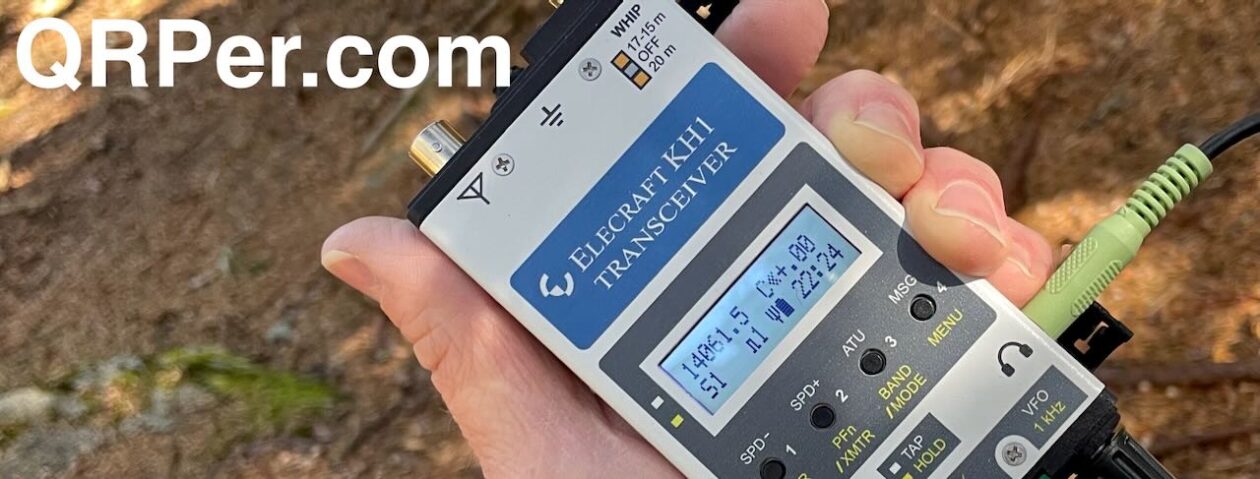 Many thanks to Andrew (K0AWG) who shares the following news about an upcoming intermediate CW class via CW Innovations.
Many thanks to Andrew (K0AWG) who shares the following news about an upcoming intermediate CW class via CW Innovations.
Andrew writes:
The class will be 10 weeks starting March 13. There are a limited number of seats for this round, but we hope to have many more classes in the future too.
The class is currently free of charge. It will be held on Monday and Thursday from 7-8pm central time. We’re looking for ops currently operating from about 10-15 wpm and having a simple on-air presence. If you are making POTA and SOTA contacts that’s perfect!
This class is a great way to really nail the characters down so that you can start to build speed with head copy in mind. One perk for POTA and SOTA is this skill will really contribute to being able to go “off script” when activating. It will help ops follow along when things aren’t quite what you expect.
Here’s the full press release:
CW Innovations presents The Comprehensive ICR Course
Dated Jan 25, 2023
Imagine being able to advance your present CW proficiency without facing the prospect of getting stuck on a plateau. Imagine too that the characters you hear become easily familiar to copy and send, as familiar as the alphabet itself when you were first learning language.
There’s no need to imagine any of this: An independent, new Comprehensive Instant Character Recognition Course delivers this as a reality, delivering the best of CW training techniques while helping operators understand their own best way to learn, progress and further challenge themselves.
Announcing CW Innovations. This is an independently run course that is module-based. It is built on scaffolding in which each successive module provides a gentle ramp upward through the learning process. This methodical process is created to address the mental and emotional roadblocks that have typically halted learners’ progress via other teaching methods.
Introduced to students in October 2022, CW Innovations has been further refined by a highly skilled and experienced team of operator educators. While there is no “magic pill,” CW Innovations provides a breakthrough process that is unique. Students have gained proficiency beyond their expectations. These results are unprecedented.
The 10-week course is designed for those currently operating with 10-15wpm proficiency, at least a simple presence on the air, and eager to improve both.
See w4yes.com for details.
A few students have shared these thoughts with us:
“I almost gave up. Stuck on a plateau for a frustrating stretch of forever, I had very little proficiency and even less confidence or hope that I could be a decent operator. After receiving 10 weeks of coaching and support from this terrific team, I have all the tools I need in order to teach myself. I can help myself make progress, sharpen both my listening and copying skills and most of all, I can have fun. Being able to do head copy was an unexpected bonus. Plateau? What’s a plateau??”
Licensed Operator since 2014 – New York
“It’s no longer learning dits and dahs…. It’s allowing yourself to hear and comprehend the sound of the characters subconsciously that will allow you to move forward in your CW skills and goals. You’re learning how to learn CW all over again. I’ve made more CW progress in the past 2.5 months than in the previous 6 years.”
Licensed Operator since 2017 – Missouri
“Why should anyone take the Comprehensive ICR course? Because if you put in the time and effort, your CW skills WILL improve. This course enabled me to go from 10 to 15 wpm copy speed as well as begin head copying my QSOs. I also, now, have the tools I need to reach any of my CW goals including listening to books in morse code, something which I never dreamed would be possible for me. The icing on the cake? The friendships I formed with facilitators and team members alike as we shared our successes and difficulties and helped one another find solutions. This course is a game changer for the world of CW.”
Licensed Operator since 2022 – Georgia
 This month, I’ll be posting a number of field reports using the Elecraft AX1 on a wide variety of radios.
This month, I’ll be posting a number of field reports using the Elecraft AX1 on a wide variety of radios.




























